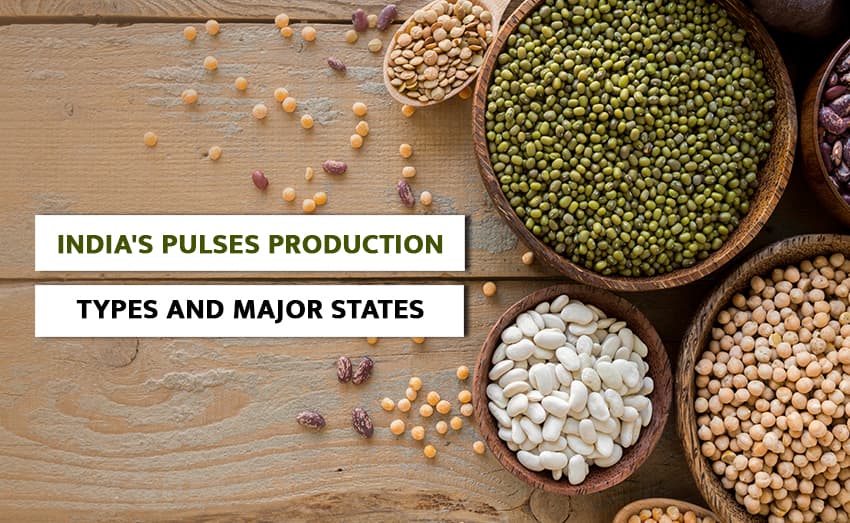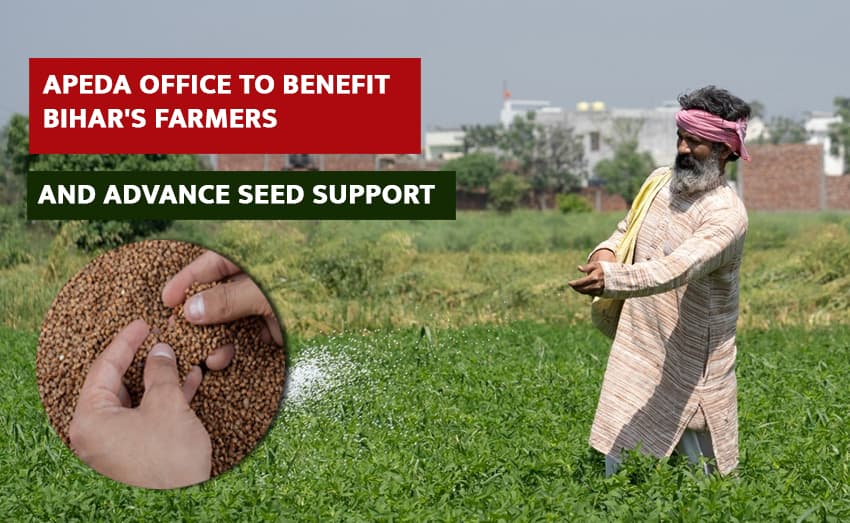Pulses are a vital food crop with a high protein content. These constitute the principal sources of vital amino acids, vitamins, and minerals in Indian diets. India is the foremost producer and consumer of pulses globally. This blog will examine the diverse array of pulses, the leading states in pulse production, and the governmental plans and activities aimed at enhancing pulse cultivation in India for national advancement.
A Comprehensive Overview of Pulses in India
Pulses are the seeds belonging to the legume family. They are available in many shapes, sizes, and colours. Pulses are cultivated throughout all three seasons: Kharif, Rabi, and Summer. India is the foremost producer and consumer of pulses globally. The Department of Agriculture and Farmers Welfare reports that India produced 246.56 lakh tonnes of pulses in 2021-2022. In the past 3-4 years, pulse production in India has risen.
Varieties of Pulses Cultivated in India
- Moong
- Lentil
- Gram
- Urad
- Tur
The following are the predominant pulse crops cultivated in India; now, let us examine the states with the highest pulse production in the country below.
Preeminent Producer of Pulses in India
- Rajasthan
- Madhya Pradesh
- Uttar Pradesh
- Karnataka
- Maharashtra
Let us examine each state in greater detail:
Rajasthan
With a total output of 39.93 lakh tonnes, the agriculturally diverse state of Rajasthan has maintained its position as a premier pulse producer. Spread up over 60.36 lakh hectares, the state produces 662 kg/ha. The wide variety of pulses grown in Rajasthan, including Moong, Arhar, and Gramme, attest to the state's versatility as an agricultural hub.
Madhya Pradesh
With an area of 58.10 lakh hectares, Madhya Pradesh is the leading producer of pulses in 2021-22, with a total of 58.51 lakh tonnes. A total yield of 1007 kg/ha was achieved by the state's high-yielding pulses. Gramme, urad, and tur pulses are the most common.
Uttar Pradesh
With a vast cultivation area of 23.46 lakh hectares, Uttar Pradesh is one of the top five states in terms of pulse diversity. With a yield of 1036 kg per acre, the state's total pulse production comes to 24.30 lakh tonnes. Gramme, urad, and arhar are the main pulses that are grown.
Karnataka
Karnataka ranks as the sixth greatest producer of pulses, with an annual output of 19.83 lakh tonnes. The state is engaged in the extensive cultivation of pulses, including chickpeas, green grammes, and black grammes. The yield per hectare of the state is 627 kilogrammes, and its total area is 3.161 million hectares.
Maharashtra
Maharashtra is famous for tur dal, also referred to as arhar. It ranks as the third-largest producer of pulses, yielding 38.22 lakh tonnes in 2021-22. An area of 44.05 lakh hectares is covered by the Indian state, which generates 868 kg/ha.
Governmental Initiatives to Improve Pulse Production in India
The cultivation of pulses in India has been increasing on an annual basis. Recent years have witnessed an 18% increase in India's aggregate pulse production. Through a variety of initiatives, the Indian government is supporting farmers in their efforts to increase the production of pulses in the country. Let us examine the following initiatives.
The Department of Agriculture and Farmers Welfare has initiated the National Food Security Mission (NFSM) to augment pulse production via area extension and productivity improvement.
The government is offering support to farmers regarding;
Crop cultivation, seed development and distribution of high-yield varieties, enhanced agricultural machinery, irrigation tools, pest control strategies, nutrient management, processing and post-harvest equipment, and training based on cropping systems, among others.
- Seed mini-kits are supplied at no charge to the farmers.
- One hundred fifty seed hubs have been established under the National Food Security Mission to procure excellent pulse seeds.
- Pulses have seen an increase in their Minimum Support Prices (MSPs) in recent years, which is meant to encourage farmers to grow more of them.















